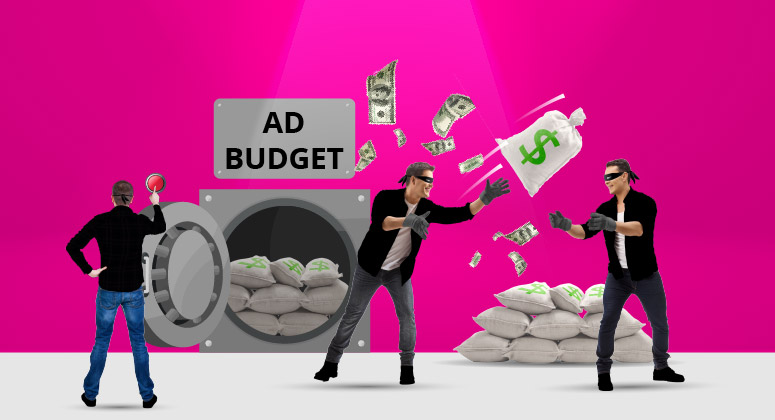Advertising Fraud 101: Protect Your Brand the Optimal Way

Table of Contents
- The dark side of online ad spending
- High-profile ad fraud on the rise
- Your brand’s reputation can suffer from ad fraudsters
- Ad fraud detection and prevention without the bots
The Dark Side of Online Ad Spending
Online advertising, like any other sphere of business, is an attractive one to fraudsters. With over US $408.4 billion estimated as an ad budget for brands in 2022, the vulnerability at stake is higher too. Unlike a common misconception that ad fraud only affects marketers, it’s one of the biggest challenges faced by publishers, advertisers, and ad-tech companies.
On average, the financial toll caused to brands globally due to ad fraud accounts for more than $4.5 million an hour. But this huge loss in revenue is not the only danger ad fraud poses to brands. Failure to monitor and protect your online advertising with an optimal solution can result in serious damage to your brand reputation.
If you’re thinking that having high-end security measures is going to help prevent ad fraud, you’re wrong. So just how sneaky does ad fraud get?
- Impression fraud: Using bots, fraudsters mimic human browsing behavior to generate fake ad impressions
- Search click fraud: Bots type keywords in search boxes to get search ads to load and then click on them to get Cost-Per-Click (CPC) revenue
High-risk ad fraud is mainly targeting soft conversions – views, clicks, and other digital impressions, which account for more than 36% of the total traffic generated via the digital medium.
Don’t forget to check out The Separation of Genuine and Invalid Traffic
High-Profile Ad Fraud on The Rise
3Ve, one of the biggest ad frauds, that frightened digital advertisers worldwide, was discovered and dismantled. The outcome:
- 1.7 million PCs were infected with malware
- Approximately 10,000 counterfeit websites generate 3 billion to 12 billion bid requests daily
- Massive servers were used to generate sourced traffic from bots
- Over 60,000 seller IDs were found impersonating legitimate web publishers and digital advertising companies, allowing fraudsters to receive ad placements and payments
3Ve was hard to detect even by Google as the ad fraudsters used counter ad manipulation and evasion, causing businesses over $29 million in losses. This was one of the very few massive ad frauds recorded and discovered in the last few years.
There is more ad fraud going undetected as marketers are convinced that the impressions, they get from their ads are 100% real. Most of these bots use residential IP addresses without the knowledge of consumers, silently tracking third-party cookies and visiting websites impersonating them.
While bots impersonating consumers and creating fake ad impressions is a cause for concern, the real threat ad fraud poses to the brand reputation is through the data they have access to. Using this data, fraudsters might commit further crimes that affect the brand, including stealing databases and personal information of their clients, identity fraud, and sometimes even misusing the brand names for criminal activities.
Your Brand’s Reputation Can Suffer from Ad Fraudsters
As a majority of the ad fraud goes undetected, many marketers and advertisers have convinced themselves that it only affects small, low-end, non-traditional digital platforms. But in reality, even the “private ad exchanges” claiming to have high-end security and credible digital ad industry participants are not safe from fraudsters.
Online advertising evolved over time, removing the human element from ad buying, and making it more efficient. This has also led to ads reaching bots instead of real people. Here’s how:
- You could be a brand, advertising on a platform that looks legit from the outside but might end up in your adverts being displayed alongside offensive or criminal content, resulting in your brand reputation taking a hit.
- You’re an advertiser running a pay-per-click (PPC) campaign. A fraudster sends a click bot in the way of your ad and there goes your money. If this continues to happen, multiple times, your ads are going to be labeled unsafe and banned eventually.
Advertisers and publishers can either keep trusting the “we are safe from fraudsters” security claims or take matters into their own hands and fight against ad fraud.
Ad Fraud Detection and Prevention without The Bots
Digital advertising has evolved quickly, and so has ad fraud. Click bots have become extremely sophisticated that they can even visit multiple websites to generate cookies, making them look like desirable and significant users. It’s not just an advertiser or publisher’s problem but affects an entire industry no matter how big or small a brand is. To tackle this at its roots, you need a smarter solution coupled with AI and machine learning.
Even though blockchain has not taken up 100% prime time in the advertising world, working with a key code for each recorded block of transaction and data, makes it almost impossible to manipulate if combined with AI and machine learning. You need a solution that would detect bots and fake impressions in real time and block them so that you are left with only quality leads. If there is anything fraudsters cannot get past, it’s validated lead conversions.
ReverseAds‘ Premium Cost Per Click model offers a guaranteed solution against click fraud and hard bounces by validating each lead you get on your ads. We charge marketers only when users reach any of the consideration points: when they spend longer than 22 seconds on your website, visit 3 pages or reach 100% scroll depth.
Click here to learn more about our Premium Cost Per Click pricing model.





